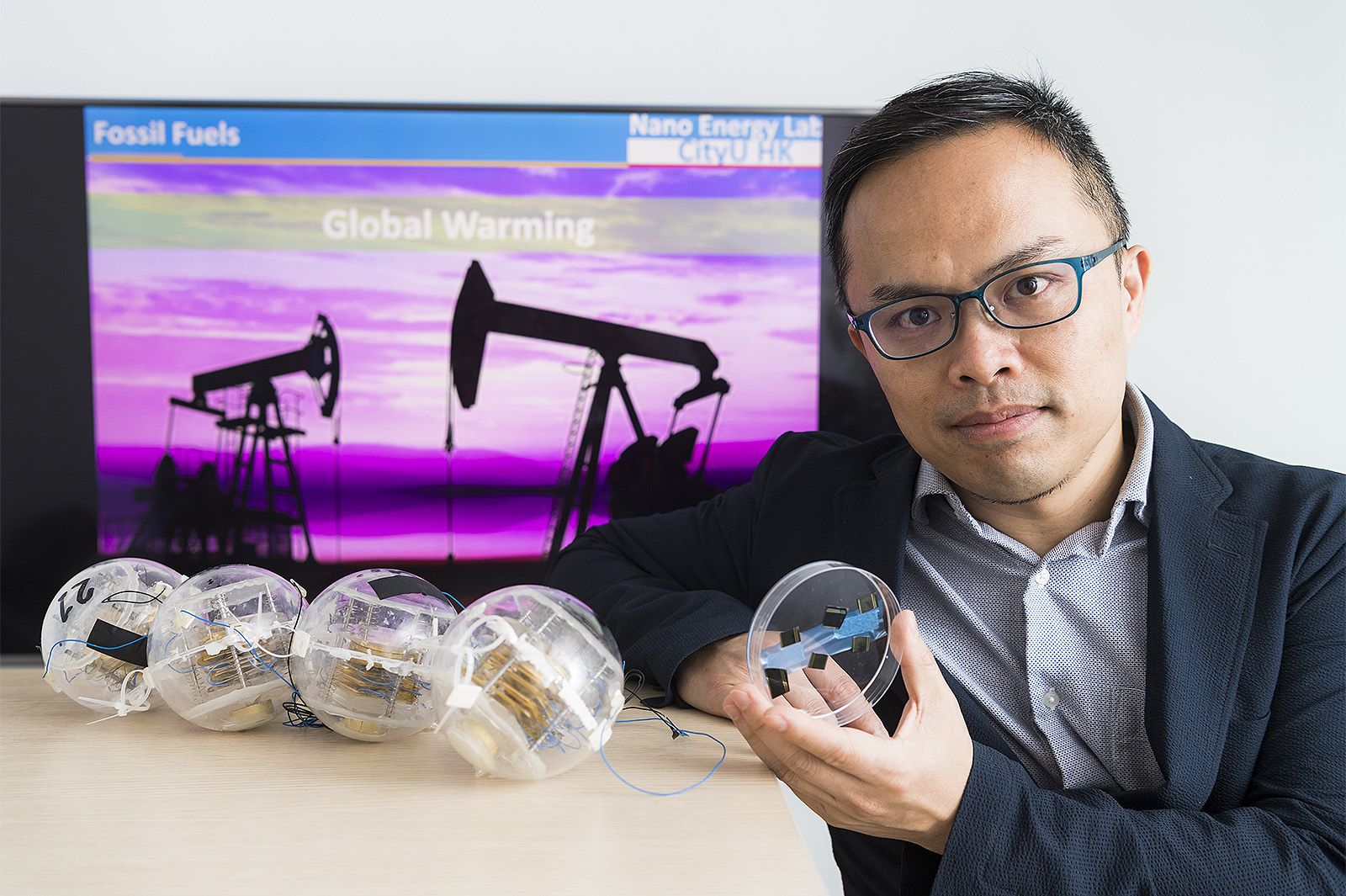New inventions boost renewable energy

A materials scientist at City University of Hong Kong (CityU) and his research teams are advancing the frontiers of renewable energy research with two significant inventions that tackle the looming energy crisis.
Led by Professor He Jr-hau from the Department of Materials Science and Engineering, the inventions include the development of a novel wave energy device that generates energy while reducing carbon dioxide (CO2), as well as a new photoelectrochemical system that will increase the efficiency of solar-to-hydrogen energy conversion by two-fold and at half the cost.
Regarding the first research project, Professor He and his research team have developed a lightweight wave-energy-driven electrochemical carbon dioxide reduction system that can capture ocean wave energy, and convert it into formic acid, a liquid fuel.
The system features three components: a spherical spring-assisted triboelectric nanogenerator (TENG) that can convert the mechanical energy of the wave into electricity; a power management circuit with a supercapacitor to temporarily store the harvested energy; and an electrochemical setup that can reduce carbon dioxide to formic acid.
“Unlike conventional wave energy converters based on electromagnetic generators, the lightweight TENG, which can float on water surface and causes minimal impact to marine life and the sea floor, is more cost-effective and able to survive storms,” Professor He said.
“A liquid fuel, in the form of formic acid, is favourable because it can be stored at room temperature and is relatively easy and safe to transport. More importantly, this technology can mitigate CO2, a major greenhouse gas, during the energy conversion process, and ultimately help combat climate change,” Professor He added.

The research team found that the new technology can achieve a higher wave energy conversion efficiency and power output than conventional converters. “In the long run, we hope to boost the efficiency of TENG to reduce our reliance on fossil fuels,” Professor He said.
The findings were published in Energy & Environmental Science under the title “Blue energy fuels: converting ocean wave energy to carbon-based liquid fuels via CO2 reduction”.
To explore the full power of renewable energy, Professor He has worked with another research team in developing a new photoelectrochemical (PEC) system that can increase the efficiency of solar-to-hydrogen (STH) conversion from 3% to 9%. Its stability increased sharply from a few minutes to over 150 hours, a record high among conventional technologies.
These findings were published in Nature Communications under the title “An efficient and stable photoelectrochemical system with 9% solar-to-hydrogen conversion efficiency via InGaP/GaAs double junction”.
Also known as artificial photosynthesis, a PEC system uses sunlight and specialised semiconductors to split water into hydrogen and oxygen.
Professor He pointed out that almost all existing PEC systems (e.g., Si and III-Vs) operated with a single-sided device, which creates a trade-off between functionality and surface protection. Most devices would fail within a few minutes because of semiconductor corrosion during water splitting. The instability and high cost of conventional technologies hinder their practical applications.
“The new system developed by our research adopts an epitaxial lift-off and transfer technique that enables the utilisation of both sides of the device and the recycling of substrate. It greatly improves the system’s stability and lifetime, and halves the cost of the device, making a cost-effective PEC device within reach,” he said.

The research team has also demonstrated the first fully integrated standalone wireless III-V-based PEC device, which is a kind of artificial leaf that can conduct energy conversion without electrical connections, with an STH efficiency of 6%.
“I believe this breakthrough could minimise the geographical constraints for future research,” Professor He added.